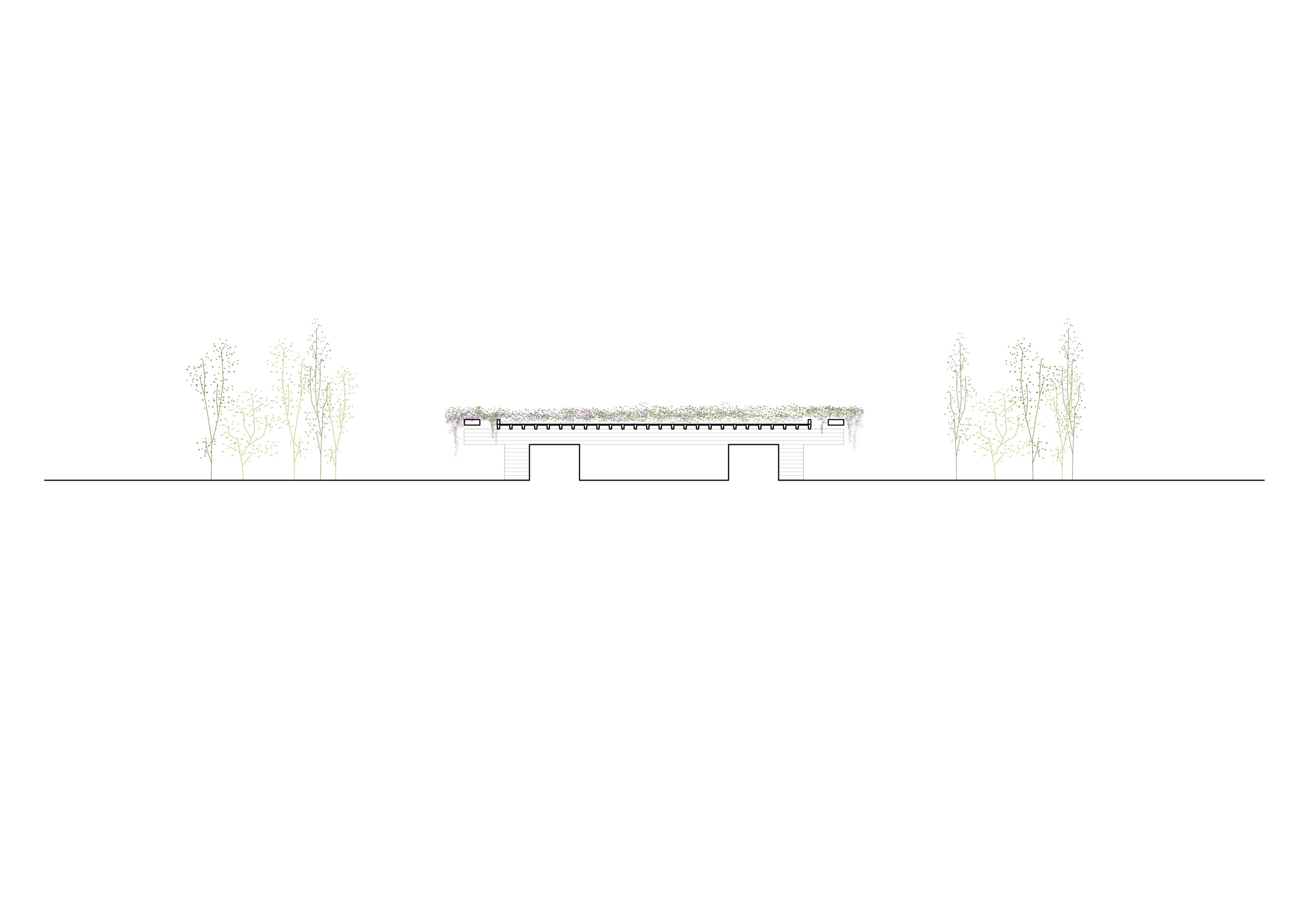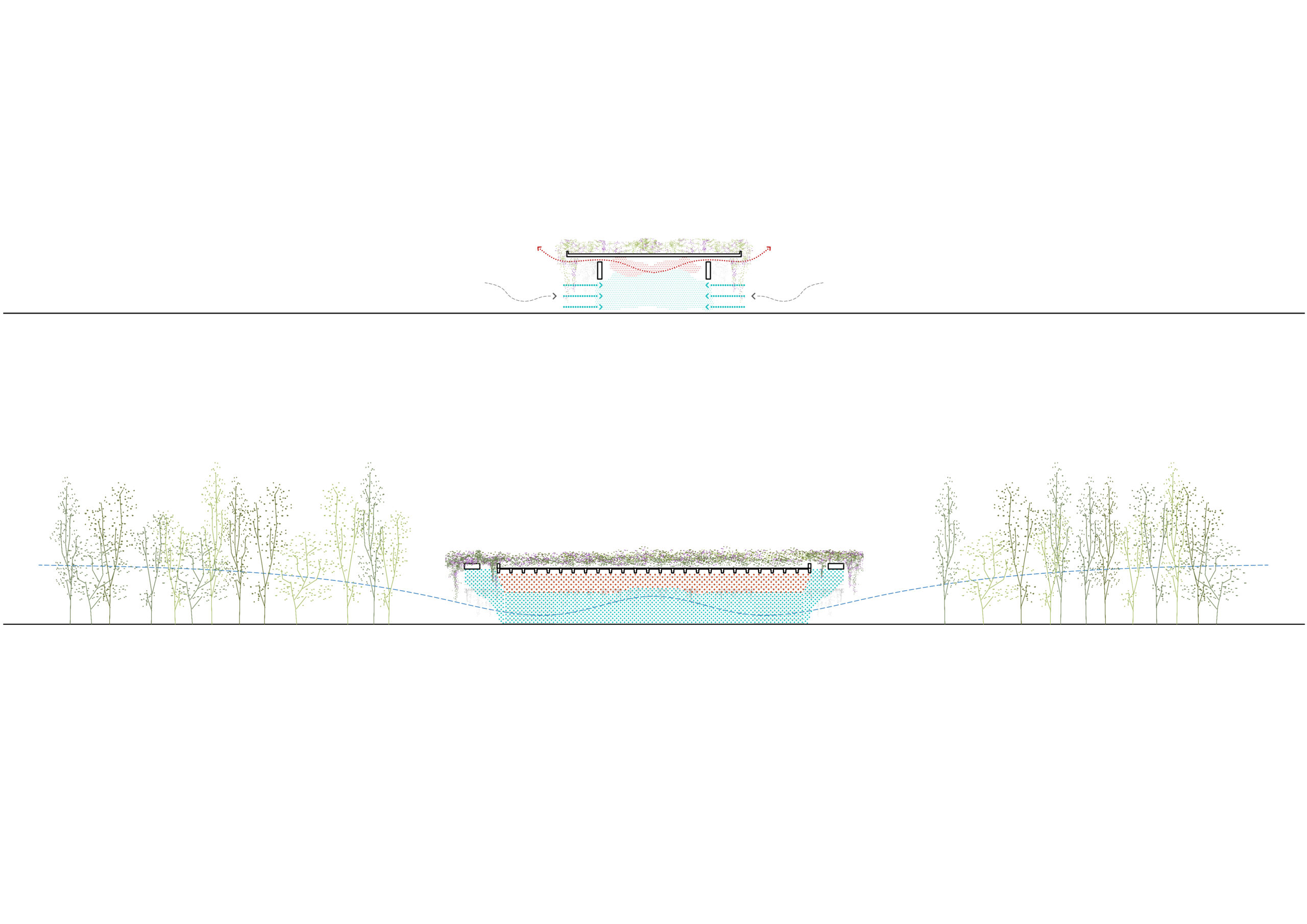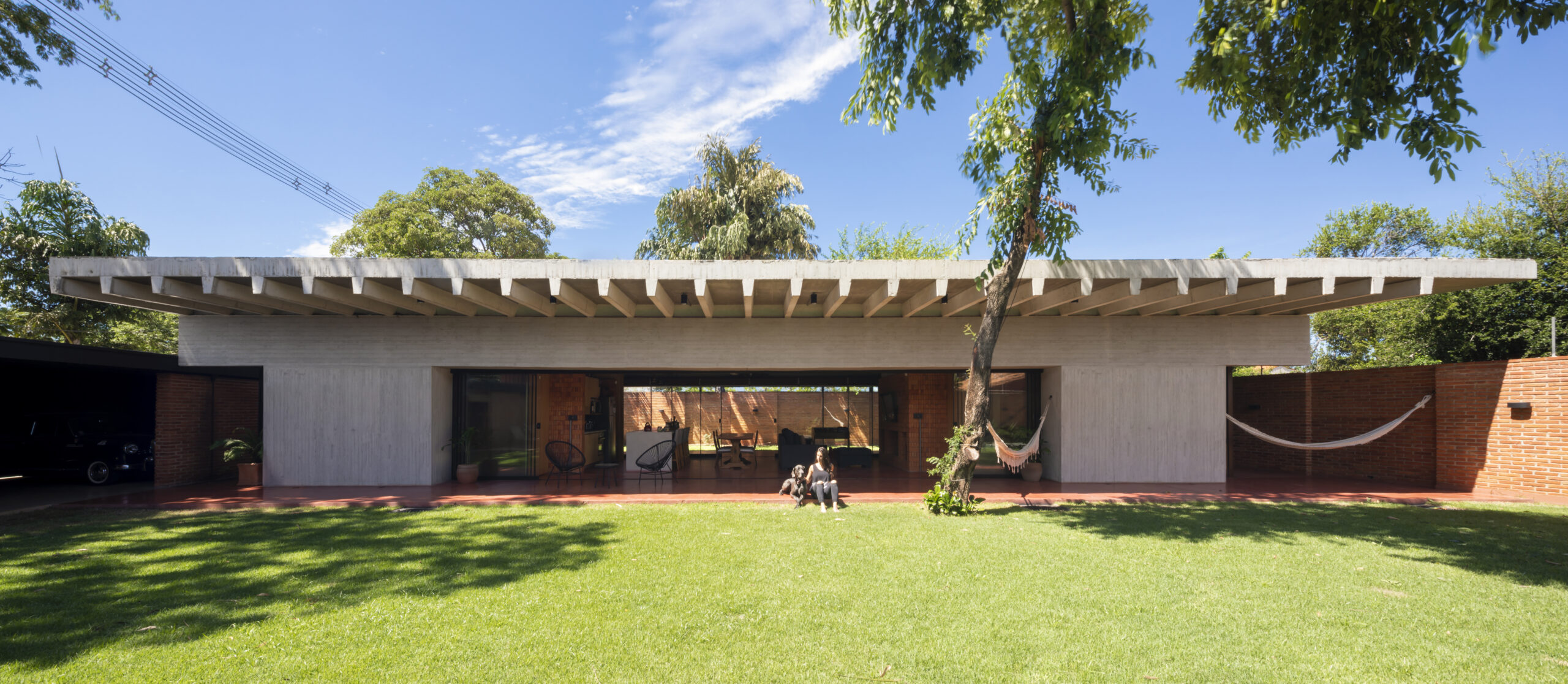(316) |
HOUSE P |
An enclosure and a porch.
A brick wall shelters and guarantees the necessary security on a 30x24m plot. The enclosure is expressed on three of its sides with the thickness of the material itself, and on the fourth it widens to locate the server spaces (quincho, parking and service) in 6m, freeing up a landscaped space of 24x24m.
A porch rises slightly from the height of the compound to look over it, establishing a visual bridge with the parks that surround the exterior of the house. The threshold is positioned asymmetrically, freeing up a larger garden on its north side and a smaller one on its south orientation, always moving away from the limits to emphasize the lighting and transversal ventilation of the interior space.
A vernacular house.
As a contemporary interpretation of the Guarani vernacular house, Kuláta Jovái, the new volume materializes as a shade-generating bi-propped canopy, a porch, an outdoor space protected from rain and sun. The house is organized by means of two fires, leaving a space between these and two others in the rear. The first one is more extroverted and open to the garden (kitchen-dining room-living room), the second ones are more private and look from the side (bedrooms).
A threshold house.
The roof is strategically located between the three existing trees, which, in their three positions and in relation to the volume, generate different thresholds: next to the entrance, receiving the inhabitant, a yellow lapacho or tajy (resistant tree); in the barbecue area, the barbecue area, a white bread or kai kyhyjeha (feared by monkeys); and in the north patio, again a large yellow lapacho that adds a great shade in the garden.
An efficient house.
The extreme temperatures of Asunción and the precise location of the house on the site, opening to the north orientation and its soft and fresh breezes, lead to a radically sustainable approach: a structure with generous overhangs that filter solar radiation when it is not necessary, in combination with a vegetable top finish, offering greater thermal insulation. Thanks to the jasmine planted at the edge of the roof and which will descend in the future as a natural vertical curtain at its edges, a greater filtering of solar radiation and a natural cooling of the air will be obtained.
A ventilated house.
The horizontal structure and the sliding enclosures of the central space allow the porch to open up to the refreshing breezes and life to take place outdoors, with almost no need for a façade.
This structure is crowned with a ribbed slab that is slightly separated from the two porticos to allow more controlled cross ventilation of the porch-space, performing a natural “free-cooling” thanks to the prevailing breezes from the interior spaces on summer nights. .
Two mineral materials, concrete and ceramics; and two tectonic materials, inside the paradise wood and outside the vegetation (existing and new).
The roof structure, supported on two large beams and four supports that contain the storage space, surround the central space, the porch, together with the two bodies that house the fire: the kitchen and the hearth, two prisms made with manual brick traditional, without taking with mortar, simply placed dry, stacked as they are in the “adoberías” for drying in the sun. These ceramic bodies are the centers where the water collected by the large roof is collected and, in turn, due to their great thermal inertia, the storage of the heat produced by the fire on days when the temperature is lower, to offer it, together with to the necessary privacy, to the rooms located at both ends of the house.
2017-2020
Asunción
Surface:
200 m2
Client:
Privat
Author:
Josep Ferrando Architecture
Architect:
Josep Ferrando
Team:
Ximena Casabianca, Melu Welzel, Ilaria Caprioli, Roger Escorihuela
Photos:
Federico Cairoli









